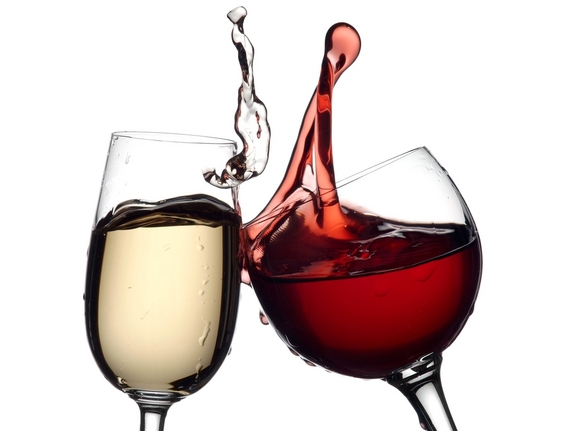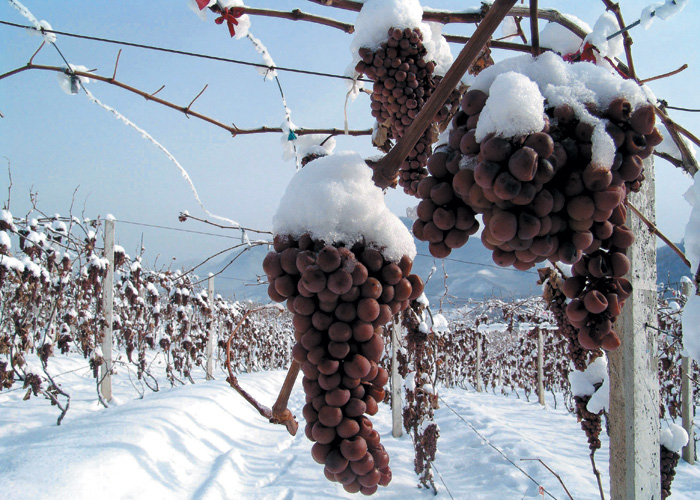Let’s have some wino! Posted by Kasia on Feb 18, 2016 in Uncategorized
If there’s ever a day to enjoy a glass of wine after work, today is the day!
February 18th is National Drink Wine Day. Growing grape vines was popularised in Poland in the 12th century, when a temporary warming of the climate occurred. Wineries were a common sight up to the 17th-18th centuries. They were found all over the country, but most were in the south, from which many town names derive, such as Winiary (“Winemakers”) and Winna Góra ( “Wine Mountain”). Then, the climate cooled down again, and Polish wine industry started deteriorating, eventually ceasing to exist in socialist post-war Poland.
Now, it is being reborn. In the last decade, 600 hectares of vineyards have been created in Poland, located mainly in such regions as Małopolska, Górny and Dolny Śląsk, in the Lublin and Gorzów Wielkopolski areas, and even more to the north, in the Warsaw and Olsztyn areas.
Zielona Góra, a town in western Poland (Lubuskie voivodeship), offers a special tourist trail for wine lovers. The trail begins at the Museum of Lubuskie Land in the gallery of the Wine Museum. The exhibition on display there contains approximately one and a half thousand beverage production exhibits and is the only one of its kind in Poland. The trail takes us to Winne Wzgórza (Wine Hills), to a wine merchant’s vintage home that was built in 1818, on the orders of August Grempler – the winery’s owner. The next stop is the Ochla open-air museum, with an interesting winery architecture exhibit. At the end of the trail, tourists will be able to spend time at the modern winery.
At the event, which usually lasts 7-9 days, one can try various types of wine at the Jarmark Winobraniowy (“grape harvest market”) as well as admire the colourful procession led by the grape harvest king – the Roman God of Wine, Bacchus. There is also a half-marathon, for those with higher energy reserves, and several outdoor concerts.
Another interesting thing is ice wine! Freezing winter is the best time to harvest grapes for ice wine. The first such wine in Poland was produced near Krakow. Common in these areas since the 18th century, Poland’s wine tradition is now being reborn.
The production of ice wine is what distinguishes the Nad Dworskim Potokiem (“At the courtly stream”) winery, property of the Jagiellonian University, from other Polish wineries. First, the harvested grapes (that froze on the vine) are pressed. Then, the concentrated juice is extracted, which gives the beverage its sweet taste. Special conditions are needed for the process, because the grape harvest has to take place at a temperature not higher than -8 Celsius. The wine experts near Krakow managed to do this in 2012. Their success yielded Poland’s first ice wine. In the early morning of New Years’ Eve workers of the Kraków winery harvested frozen grapes. The temperature outside was minus 17 degrees Celsius.
In the Nad Dworskim Potokiem winery, twelve thousand grape vines are grown, out of which ten thousand litres of wine were produced in 2014. Grapevine cultivation and wine production use some of the newest know-how and technologies. The process is supported by scientists from the Faculty of Pharmacy at the Jagiellonian University, which has been offering postgraduate studies in wine-making (or enology) since 2013. The Nad Dworskim Potokiem winery is a testing ground for Jagiellonian University students and scientists, who are frequent guests there. It serves as an example for other wineries in Poland.
Well, let’s have some wine today!

Build vocabulary, practice pronunciation, and more with Transparent Language Online. Available anytime, anywhere, on any device.
About the Author: Kasia
My name is Kasia Scontsas. I grew near Lublin, Poland and moved to Warsaw to study International Business. I have passion for languages: any languages! Currently I live in New Hampshire. I enjoy skiing, kayaking, biking and paddle boarding. My husband speaks a little Polish, but our daughters are fluent in it! I wanted to make sure that they can communicate with their Polish relatives in our native language. Teaching them Polish since they were born was the best thing I could have given them! I have been writing about learning Polish language and culture for Transparent Language’s Polish Blog since 2010.





